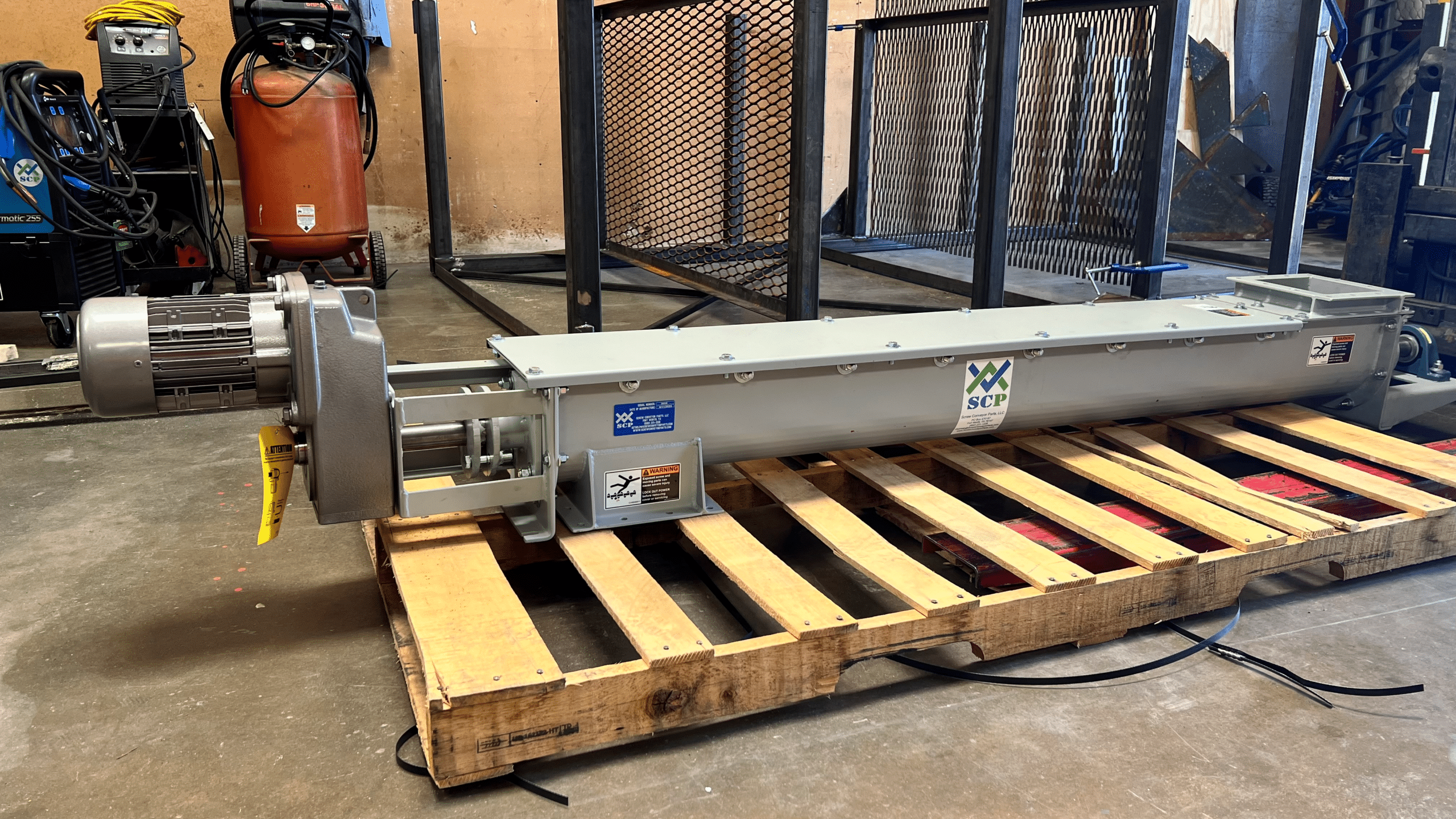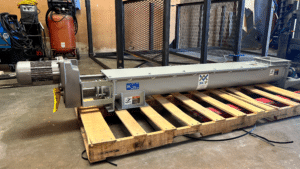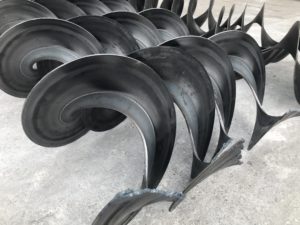Screw conveyors are versatile equipment that can handle a wide variety of products in a wide variety of applications. From a simple screw conveyor moving plastic pellets from a feeder to an extruder hopper to a very complex screw feeder metering minerals out of a silo to a screener, each application is unique and each has its own factors that influence costs. The simple screw conveyor moves has low horsepower requirements and uses all stock components. The complex screw feeder has a headload of minerals to deal with, uses a variable pitch cone screw, hardened steel to resist abrasion and needs a lot of horsepower to move the heavy, sluggish minerals. For example, the 10ft simple conveyor might be $6,000 while the 10ft complex screw feeder might be $40,000. Both use screws but have very different costs due to the requirements of the application.
There are a lot of factors influencing the cost of a screw conveyor and it is easy to get carried away with options and features and turn the $6,000 conveyor into a $40,000 conveyor. Because screw conveyors are standardized among manufactures and most the components are stock, they tend to be the lowest cost equipment for any bulk material process. At Screw Conveyor Parts, we offer all the stock components on our website and 90% of all screw conveyors we build use these parts, exclusively. This keeps costs low, makes maintenance easier, makes sourcing replacement parts easier and ultimately extends the live of the screw conveyor. Below is a list of some of the fastest ways to elevate the costs of a screw conveyor.
1. Using sectional flighting
2. Using non-stock components
3. Needing a screw feeder
4. Inclining screw conveyors
1. Using sectional flighting – Most people don’t realize how inexpensive helicoid flighting is and how much cost is added by using sectional flighting. This alone is the largest contributor to additional screw conveyor costs. Helicoid flighting is easy to make and assemble and therefor uses considerably less labor to build.
2. Using non-stock components – This can unexpectedly be caused by asking for special shaft seals, special shaped troughs, special cover features, inlet/discharge chutes, special drives, etc.
3. Needing a screw feeder – Because screw feeders have different requirements than screw conveyors, they also have more expensive components like a feeder screw, feeder shroud and the screw conveyor drive.
4. Inclining screw conveyors – Inclining a screw conveyor reduces the conveying capacity and therefor requires a larger conveyor or using special flighting (Reason 2). Over 20deg and the efficiency drops dramatically leading to the need for additional horsepower to account for possible upset loading caused by the effect of gravity on the conveyed product.
For an idea of costs, look at our screw conveyor kits, add the recommended screw conveyor drive at the bottom of the screw conveyor kit page and add about 15% if you want it assembled.




